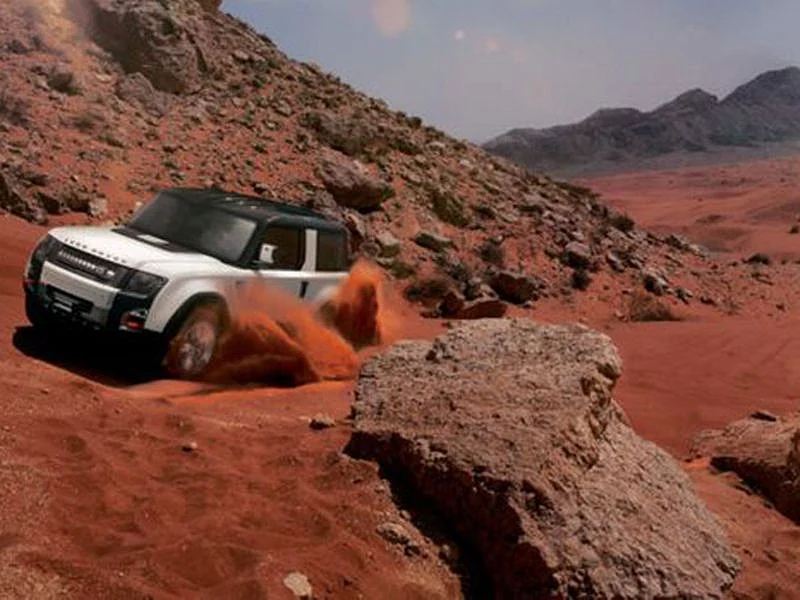Desert driving in the UAE: Expert Tips for a safe and thrilling adventure
Here’s how to navigate the terrain safely and responsibly

The UAE’s deserts, with their rolling dunes and hidden wadis, offer an irresistible escape from the hum, monotony, and manufactured order of city life. As spring arrives, with the air still cool enough for adventure and golden light stretching long into the afternoon, the desert becomes an open invitation to explore. There’s magic in the way the wind sculpts the sand into rippling patterns, in the hush that settles over the dunes at sunset, and in the thrill of carving a path through untouched terrain. But for all its beauty, the desert is unforgiving to the unprepared. A safe and rewarding off-road adventure isn’t just about having the right vehicle – it’s about knowing the land, respecting its challenges, and being ready for whatever lies beyond the next crest.
Before embarking on an off-road journey, ensuring your vehicle is in optimal condition is paramount. John Spiller, off-roading expert and Route Director of Gulf News Fun Drive emphasises the importance of a well-maintained vehicle: “Preparation is key to any off-road driving aspirations. The vehicle must be suited to the intended purpose and be in good mechanical condition and carrying the basics: sufficient fuel, spare wheel, jack, and wheel brace or spanner.”
Spiller recommends keeping drinking water, a tyre pressure gauge, a deflator, a compressor, a shovel, a tow rope, and shackles on hand. He also highlights the importance of securing heavy items within the car to prevent injuries during sudden manoeuvres. “Never take more passengers than the vehicle is specified to carry, each passenger must have a seat belt and while in the dunes, the windows should be closed,” Spiller points out.
Driving on sand presents challenges that are distinct from conventional road driving. One fundamental technique is adjusting tyre pressure to improve traction. Spiller recommends deflating tyres to around 15 psi (1 bar), noting that while the sensation may initially feel unusual, drivers will quickly adapt. It’s crucial to reinflate tyres promptly upon exiting the desert or, if immediate inflation isn’t possible, to limit highway speeds to 80 kph until reinflation.
Momentum is key – steady, controlled acceleration prevents bogging down. When approaching dunes, assessing the terrain and choosing a suitable path can prevent potential hazards. “Having succeeded in climbing the slope, managing the crest becomes the next challenge – not too fast, not too slow and prepared to react to whatever is on the other side,” he says. Spiller advises beginners to walk up dunes to evaluate the descent before driving, ensuring they are prepared for what lies ahead.
Inexperience can lead to common mistakes in the desert. One such error is attempting to power through when stuck, which often exacerbates the situation. Spiller cautions against simply revving the engine, as this can cause the vehicle to dig deeper into the sand. Instead, he suggests reversing along the original tracks, as the compacted sand provides a firmer base, and then reattempting the passage with a slightly altered approach and increased throttle.
Another frequent oversight is stopping in precarious positions. It’s advisable to halt with the vehicle facing downhill and to avoid braking abruptly, which can create sand mounds under the tyres, making it harder to move forward. When parking, choosing firm, level ground can prevent unnecessary complications during departure.
Desert ecosystems are fragile, requiring mindful exploration. While wind erases tracks over time, it’s crucial to minimise disturbances. Recent rainfall has encouraged plant growth, and drivers should avoid damaging shrubs and bushes. Spiller also stresses leaving no trace: “Always take your litter with you and never light fires directly on the sand. Firepits, readily available in the market, are a safer and more environmentally friendly option.”
If you are new to off-roading, joining established clubs or groups can provide invaluable experience and camaraderie. Spiller advises against solo ventures, especially for beginners, due to potential safety risks. Participating in organised drives offers structured guidance, allowing novices to build confidence and skills under the watchful eyes of seasoned enthusiasts.
For those going in with the right preparation and a deep respect for its rhythms, the desert isn’t just a place to explore; it’s an experience to be embraced, a world of quiet wonder that rewards those who tread wisely.
Top desert routes to explore
Fossil Rock, Sharjah – Famous for its unique rock formations and relatively easy dunes, making it ideal for beginners.
Al Badayer, Dubai – Home to the iconic ‘Big Red’ dune with accessible soft sands, though some high dunes may be challenging for absolute beginners. Stick to the easier routes.
Al Khatim Desert, Abu Dhabi – Rolling dunes between Abu Dhabi and Al Ain, suited for amateur desert drivers.
Sweihan Desert, Abu Dhabi – More suited for intermediate to advanced drivers due to its mix of soft and steep dunes. Beginners should stay near the outskirts.
Liwa Oasis, Abu Dhabi – Offers breathtaking scenery, but most dunes are massive and better suited for experienced drivers. Some beginner-friendly routes exist on the outskirts.
Sign up for the Daily Briefing
Get the latest news and updates straight to your inbox
Network Links
GN StoreDownload our app
© Al Nisr Publishing LLC 2026. All rights reserved.